We interviewed Andrea Mi, dj and professor at IED and LABA in Florence, architecture expert, clubbing culture, communication and moderator of the meetings “My Fever. Sounds and voices of the club culture” within the show “Night Fever. Designing Club Culture 1960 – Today” at the Pecci Center in Prato; a review of four meetings “on display” to discover the history of the Club Culture from the protagonists’ voice, combining private stories with highlights of this fascinating journey.
Did you have the opportunity to accompany visitors through the halls of the “Night Fever” exhibition during the “My Fever” appointments. To those who have not yet seen the exhibition how would you tell it briefly?
I would say that this is one of the most complete and important exhibitions ever dedicated to the history and culture of clubs. Being produced by the Vitra Design Museum and ADAM – Brussels Design Museum, two of the highest international design-related institutions, it takes on the architectural space and the design of the furnishings, as well as the analysis of urban contexts, as privileged perspectives from which to look at the history of club culture. The subtitle is justified: “Designing Club Culture 1960 – Today”. Another factor to consider is that this story was written starting from an assumption, shared by the curatorial staff headed by Jochen Eisenbrand and assisted by Elena Magini, as an associate curator for the exhibition at the Pecci Center: the discos were real epicenters of contemporary culture. They questioned the established codes of entertainment and allowed to experiment with alternative lifestyles through the most avant-garde design, graphic and fashion events.
Along with films, vintage photographs, posters, clothes and works of art, the exhibition also offers a series of light and sound installations that will accompany the visitor on a fascinating journey full of ideas to decipher. To complete the exhibition, Konstantin Grcic and Matthias Singer have developed a musical and luminous installation, a silent disc that catapults visitors into the lively history of club culture. A selected collection of record covers, including drawings by Peter Saville for Factory Records or the programmatic cover of the Nightclubbing album by Grace Jones, finally underlines the important relationships between music and graphics in the history of discos from the 60s to today.
With which guests did you get to talk in these meetings?
To accompany us in the best way towards the end of the exhibition, with the Pecci Center we have created ‘My Fever’, a review of four meetings on display to discover the history of club culture from the protagonists’ voice. The idea was to build opportunities for an in-depth discussion but in a dialogical and informal way. That’s why we thought of a series of guests that would help us to follow the exhibition path each time with a different look. In the first meeting we had Simona Faraone, one of the first female DJs in Europe, a pioneer in the scene in Rome since the early 1990s, and Mauro “Boris” Borella, one of the founders and animators of the historic club Link Bologna, a crucial place for the development of Italian clubbing linked to international scenes. In the second appointment, together with Mario Pagano, we explored themes related to radical architecture, avant-garde design and urban contexts in which the clubs have developed. Then, with Emanuele ‘Zagor’ Treppiedi and Elisa Miglionico (Edizioni Zero) we started from the extraordinary experience of ‘Notte Italiana’, a project launched at the 2014 Architecture Biennale, to trace the history of our clubbing and tell how the world changed of the night from the beginning to the present. In the last of the events on display, Sunday 13 October from 17:00, we will have as special guests the young crew of Freaky Deaky, a good news in the map of the best Tuscan parties of recent years and a true veteran of clubbing national as Paolo Kighine, historical resident of cult clubs like Duplè, Imperiale, Jaiss, Insomnia. It will be fun to retrace with them, who are young, the historical excursus of the exhibition. And finally, end with a flourish with Paolo Kighine’s dj set. I have only had the task of urging these guests, pulling precious memories and delicious personal anecdotes out of their cylinders and mediating the questions of the public.
As a passionate, expert and professional, how would you define the “club culture” and how important it is to deepen it and study it? Often institutions and spaces of various kinds do not reserve (unfortunately) so much attention to the subject.
From the interdisciplinary red threads woven in the exhibition it becomes very clear that the clubs have been (and, in some ways, still are) fundamental places for the emergence and growth of subcultures. Temporarily autonomous zones, as Hakim Bey would have called them, or heterotopias, according to the interpretation dear to Michel Foucault. In addition to musical events, for which they were the laboratory of new trends, they were the ideal setting for the development of performing arts and design, called to respond to the need for space flexibility. A space that is both physical and immaterial, participatory and democratic. The clubs have amplified some of the most radical and creative movements (including social) and fashion schools, they have generated a new way of understanding the publishing of customs and society, they have profitably interwoven their history with that of many fundamental moments of the more revolutionary and unconventional art. And it’s not just about hedonism, in fact. On closer inspection, the exhibition emerges with a strong continuity between the movements of emancipation, social claim and the club scene. “The construction of the processes of self-consciousness and identity of movements for gay and lesbian rights – he told me, in a recent interview, Jochen Eisenbrand – would not have been the same without the fundamental work done by at least two clubs in the New York of the 70s”. And if the Big Apple, Chicago, Detroit, Berlin and London can be considered the cardinal points of this story, the role played by some seminal Italian experiences is not negligible. It was not easy to understand a very articulated, complex and full of disciplinary interactions, but now that we have a sufficient historical perspective, research in the university sector, in-depth festivals, bibliographic study films are multiplying and, even at institutional level, we begin to understand that if we have called it Culture of the Club, there will be some reason.
In a voracious and fast contemporary, what image of “club” do you carry in your heart and why?
If I have to refer to my personal ‘biography’ I should name you quite a bit. I try to narrow the field down to those who, in addition to being in the baggage of my dearest clubber and DJ memories, I believe have given a substantial turning point to the Italian history of clubbing.
The historic Link Project in via Fioravanti in Bologna, born in 1994 from the eviction of Isola nel Kantiere (another very important social center), was the first real independent cultural production center in Italy, as well as the place where I have definitely changed and expanded the meaning I gave to the word dancefloor.
The Tenax in Florence is linked with many different threads to my story. It was born, in 1981, in a people’s house in the northern suburbs of the city, strongly backed by Controradio (a broadcaster I worked with for almost thirty years) as a space for concerts and then evolved into a club tout court. Having been able to make my wish party, Unnderpop, on Wednesday night for a couple of years with guests like Kode9, Laurel Halo, Dam Funk, was a dream come true.
Finally, the Kode_1 in Putignano, a small town in the Bari area, with which I had the pleasure of working from the beginning to the end of its history, made me understand that some of the best energies today are found in the suburbs, even as regards the dancefloor. Read the tweet of an accredited international artist like Throwing Snow, the morning after he had played in our club in front of 150 enthusiast dancers, “Plastic People seems to have been reincarnated in South Italy and is called KODE_1!”, Or see the smile printed on Ben Ufo’s face, at the first light of dawn, as he asked us when he could go back and put the discs there, well … these are moments you can’t easily forget.
Info:
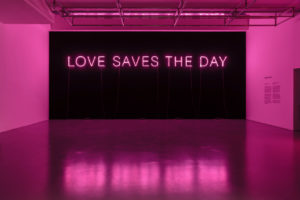 Night Fever. Designing Club Culture 1960 – Today
Night Fever. Designing Club Culture 1960 – Today
Exhibition by Vitra Design Museum e ADAM – Brussels Design Museum. Exhibition view at Centro Pecci, Prato, 7.06 – 13.10.2019. Photo : Ela Bialkowska, OKNOstudio
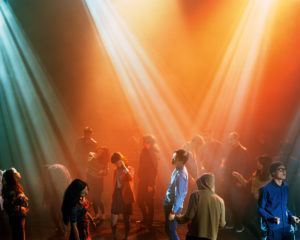 Chen Wei, In the Waves #1 , 2013 © Chen Wei Courtesy Ota Fine Arts, Shanghai/Singapore/Tokyo
Chen Wei, In the Waves #1 , 2013 © Chen Wei Courtesy Ota Fine Arts, Shanghai/Singapore/Tokyo
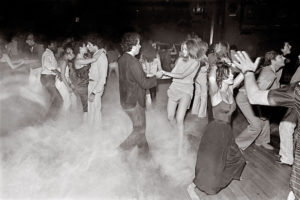 Xenon, New York, 1979 photo © Bill Bernstein – David Hill Gallery, London
Xenon, New York, 1979 photo © Bill Bernstein – David Hill Gallery, London
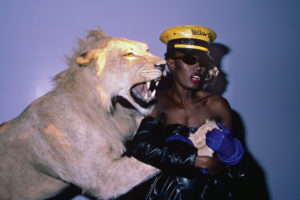 Grace Jones at “Confinement” theme , Area, New York, 1984 © Volker Hinz
Grace Jones at “Confinement” theme , Area, New York, 1984 © Volker Hinz
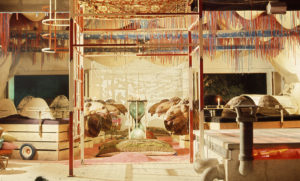 Gruppo UFO, Night Shelter for the Beach Rescue Camels, BambaIssa,1969 Courtesy Gruppo UFO photo ©CarloBachi
Gruppo UFO, Night Shelter for the Beach Rescue Camels, BambaIssa,1969 Courtesy Gruppo UFO photo ©CarloBachi
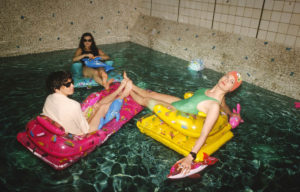 Les Bains Douches, Paris, 1990. Interior design Philippe Starck photo © Foc Kan
Les Bains Douches, Paris, 1990. Interior design Philippe Starck photo © Foc Kan
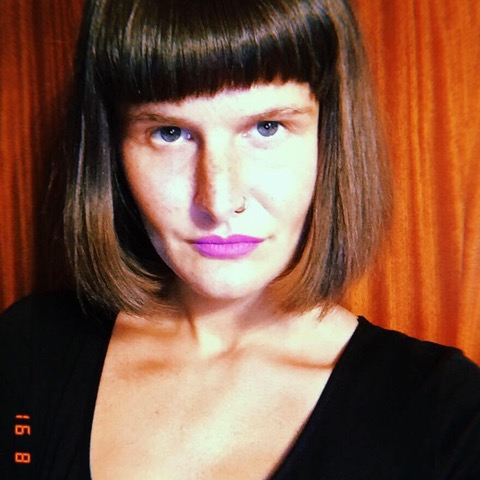
(1990) Graduated at DAMS in Bologna in Visual Arts with a thesis on the relationship and the paradoxes that exist between photography and fashion, from Cecil Beaton to Cindy Sherman, she specializes at the Academy of Fine Arts in Bologna in the two-year course in art teaching, communication and cultural mediation of the artistic heritage with a thesis on the historical-critical path of Francesca Alinovi, a postmodern critique. Since 2012 she has started to collaborate with exhibition spaces carrying out various activities: from setting up exhibitions to writing critical texts or press releases, to educational workshops for children, and social media manager. She has been collaborating since 2011 with various magazines: Vogue online, The Artship, Broken Fracture, Wall Street International Magazine, Forme Uniche Magazine.






NO COMMENT